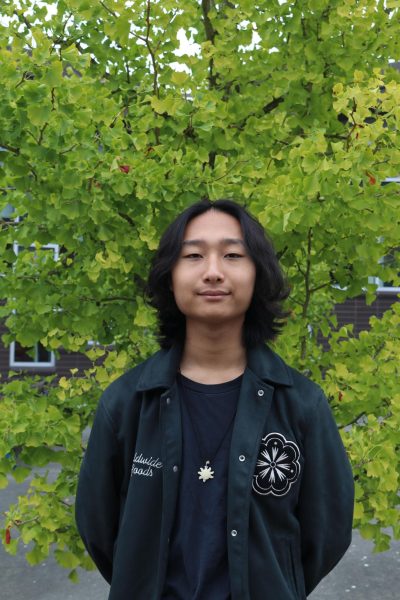Bilingual baddies
Multilingual Shorewood students share their experiences with speaking more than one language and the impact of other cultures.
May 17, 2021
A second language is known to be one of the hardest things for a person to learn. Memorizing meanings, verb patterns and conjugations can seem overwhelming and impossible to a lot of people, but there is a huge population of bilingual and multilingual students here at Shorewood.
A lot of students speak English at school and another language at home. This is the case for junior Sing Well To. To is multilingual, speaking English, Mandarin, and Hainanese. He speaks Hainanese at home and English at school.

Speaking multiple languages has helped To connect with others. He says that being multilingual “opens up a lot of cultural and social opportunities, where I can get to know people even more.” Being multilingual has broken down social barriers between him and other people. “Whenever I go to cultural events I get to talk with some of my parents’ friends and learn more about what’s going on and why,” To said.
To has also been able to help others through being bilingual. “I’ve been able to aid people at food drives, clothing drives, and teach English classes to kids that only knew Mandarin.”
Similarly, senior Lilia Pate is happy to speak two languages. Pate speaks English and Japanese. “Being bilingual has positively impacted my life because it gave me a larger perspective,” Pate said.
Pate has been learning both English and Japanese since she was a baby. Her mother is Japanese and started teaching her when Pate was young. She enjoys the way she can connect and communicate with others. “Being bilingual helped me communicate with my family in Japan and America,” she said.
To and Pate have had a similar experience socially with being multilingual. To said, “It allows me to communicate and bond with more people.”
Pate has also had the opportunity to help educate others. “I taught some of my friends in Japan how to speak English,” she said. Pate was also able to help her American friends learn some Japanese. “In middle school and high school I would help people in my Japanese classes.”
Jacobo Puentes, junior, enjoys being able to speak both English and Spanish because it allows him to help other people who are new to English. “Sometimes I can help students who are new to the US and come from a Hispanic country,” Puentes commented.
He knows how it feels to be very new to a language and he is always open to helping others. “A Venezuelan girl I met two years ago spoke English, but it was easier for us to just speak in our native language,” Puentes said. He likes the flexibility being bilingual gives him. “When I’m watching a movie I get to choose whether to watch it in English or Spanish,” he said.
Being bilingual has also given Puentes a very unique view on culture. “Being bilingual also makes you bicultural which is something pretty interesting not a lot of people get to experience,” he says.
Being able to experience two very different cultures isn’t something most people have the chance to do, and Puentes feels lucky for his multicultural childhood and adolescence. He is also very thankful that he’s been able to aid his parents. “When I’m helping my parents when they don’t understand something I can explain it to them.”
All three multilingual students feel that the biggest advantage to speaking more than one language has been the ability to communicate with more people and help others. They all understand what it’s like trying to learn a new language and how frustrating it can be. “Sentence structures and grammar can be completely different and difficult to grasp,” Pate said.
Being multilingual has a lot of benefits, such as being able to help people and connect to people you wouldn’t be able to connect with otherwise. Learning multiple languages can be really hard, but these three students are great examples of how helpful being multilingual can be. Puentes said, “I started learning English when I was 11, but I’m still learning every day.”




Molly • May 25, 2021 at 2:59 pm
KATE!!! this article is awesome. everything flowed really nicely and I loved reading it.